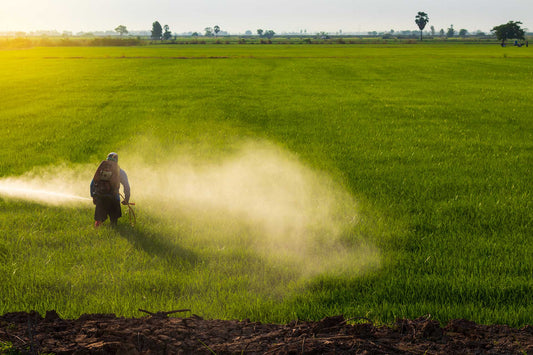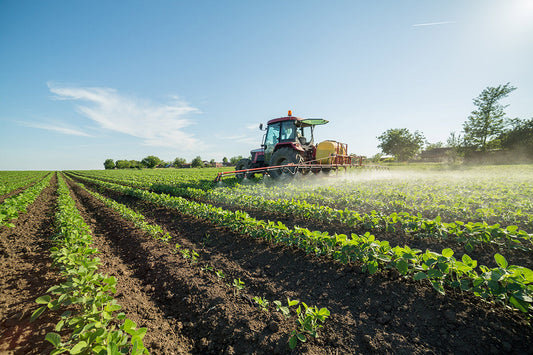Roundup Weed Killer, produced by Bayer (formerly Monsanto), is a glyphosate-based herbicide designed to kill unwanted weeds, grasses, shrubs, and even small trees by being absorbed through the leaves and translocating to the roots. It's non-selective, meaning it will kill any plant it contacts, so it's ideal for spot treatment, clearing areas before planting, or total vegetation control in non-crop areas like driveways or fences. This guide covers general usage for common products like Roundup Weed & Grass Killer Concentrate or Ready-to-Use formulas, based on official instructions. Always read and follow the product label for your specific variant, as formulations and regulations may vary by region and year (as of 2025, check for any updates on restrictions, e.g., in certain U.S. states). Improper use can harm desirable plants, people, pets, or the environment.
Types of Roundup Weed Killer Products
- Ready-to-Use (RTU): Pre-mixed in spray bottles or wands (e.g., with Sure Shot® Wand for extended reach and shielding). Best for small areas or spot treatments.
- Concentrate: Requires mixing with water (e.g., Roundup Weed & Grass Killer₄ Concentrate). More economical for larger areas; use with a tank sprayer.
- Specialized Variants: Like Roundup for Lawns (selective for certain grasses) or Super Concentrate for tough weeds—confirm your product's type.
Step-by-Step Guide to Using Roundup Weed Killer
Step 1: Prepare and Plan
- Identify the Target Area: Scout for weeds or grasses to treat. Roundup works best on actively growing plants under 6 feet tall. For lawns, use a lawn-safe variant; for total kill (e.g., before reseeding), use standard non-selective.
- Check Weather and Timing: Apply on a clear, dry day with temperatures above 60°F (15°C) for optimal absorption. Avoid windy conditions (>5 mph) to prevent drift, and don't apply if rain is forecast within 30 minutes (though it's rainproof after that). Best time: Morning or evening when weeds are actively growing. For best results, treat young weeds (under 3 inches) or in spring/fall.
- Gather Supplies:
- Product bottle.
- Sprayer (tank sprayer like Roundup Economy Sprayer for concentrate; handheld wand for RTU).
- Measuring tools (cap or cup for concentrate).
- Personal Protective Equipment (PPE): Long sleeves, pants, chemical-resistant gloves, safety goggles, and closed-toe shoes. A mask is optional but recommended for mixing.
- Read the Label: Confirm approved uses, rates, and restrictions (e.g., not for use in some states like New York for lawn products). Test on a small area if unsure about nearby plants.
Step 2: Mix the Product (For Concentrate Only; Skip for RTU)
- Equipment: Use a clean, calibrated tank sprayer (1-2 gallon capacity for small jobs). Avoid mixing in food containers.
- Dosage:
- For general/tough weeds (e.g., perennials, grasses over 3 inches): Mix 6 fl oz (12 Tbsp) of concentrate per gallon of water.
- For easy-to-kill weeds (e.g., small annuals under 3 inches): Mix 3 fl oz (6 Tbsp) per gallon of water.
- For brush/vines or heavy infestation: Up to 9 fl oz per gallon (check label).
- How to Mix:
- Fill the sprayer halfway with water (use clean, fresh water).
- Add the measured concentrate (use the bottle cap for accuracy).
- Fill to the full gallon mark with more water.
- Close the lid and shake/pump vigorously for 10-15 seconds to mix evenly. Use within 24 hours for maximum effectiveness.
- Tip: For larger areas, scale up (e.g., 1.5 gallons of mix covers about 300 sq ft at standard rate). If using a dial-adjustable sprayer, set to the oz marking.
Step 3: Apply the Herbicide
- For Ready-to-Use (RTU):
- Shake the bottle well.
- Attach the wand or nozzle if included.
- Hold the sprayer 12-18 inches from the target and spray evenly until weeds are wet but not dripping (thorough coverage of leaves and stems).
- For Concentrate:
- Pump the sprayer to build pressure.
- Walk steadily and spray from 12-18 inches away, covering foliage uniformly—focus on leaves where absorption occurs.
- Apply to the entire plant, including lower stems, but avoid pooling on soil.
- General Application Tips:
- Target only unwanted plants; use a shield (e.g., cardboard) for edges near desirable areas.
- For spot treatment: Spray individual weeds.
- For broadcast (larger areas): Use a boom sprayer on a vehicle for fields, maintaining even speed.
- Coverage: One gallon of mixed solution treats about 250-300 sq ft of light weeds.
- Avoid overspray: If it hits desirable plants, rinse immediately with water.
- Duration: One application usually suffices; visible wilting in 2-4 days, full death in 1-3 weeks. Reapply if regrowth occurs (wait 7 days).
Step 4: Monitor and Follow Up
- Observe Results: Weeds should yellow, wilt, and die. Dead plants can be left to decompose or removed after drying.
- Reapplication: If rain washes it off within 30 minutes or weeds survive, reapply after 7 days. For persistent areas, use an extended-control formula (lasts up to 12 months).
- Waiting Periods: Wait 3-7 days before planting new seeds or transplants in treated soil (glyphosate breaks down quickly). For edible crops, follow harvest intervals on the label (often 0 days for non-crop use).
Step 5: Clean Up and Storage
- Cleanup:
- Rinse the sprayer: Fill with water, spray into a treated area or gravel (not near water sources), and repeat 2-3 times.
- Dispose of rinse water on bare soil away from plants or water.
- Triple-rinse containers if disposing.
- Storage: Keep in original container in a cool, dry place (above freezing, below 100°F). Shelf life: 2-8 years for concentrate if unopened. Store away from children, pets, and food.
- Disposal: Use entire product; for empties, recycle per local rules or puncture and trash. Never pour down drains.
Safety and Environmental Considerations
- Personal Safety: Wear PPE during mixing and application to avoid skin/eye contact or inhalation. Wash hands/clothes after use. If exposed, rinse with water and seek medical help if symptoms (irritation, nausea) occur. Keep pets/children away until dry (2-4 hours).
- Environmental Impact: Non-toxic to bees/birds when used as directed, but avoid application near water bodies (maintain 5-10 ft buffer) to prevent runoff. Glyphosate binds to soil and degrades via microbes, but overuse can affect soil health. Not for aquatic use unless specified.
- Health Notes: Glyphosate is EPA-approved but controversial—some studies link long-term exposure to health risks. Use minimally and follow integrated pest management (e.g., manual weeding).
Tips for Beginners
- Start small: Test on a few weeds to check effectiveness.
- Enhance results: Add a surfactant (if label-approved) for better sticking, or apply in sunny conditions for faster uptake.
- For Lawns: Use Roundup for Lawns variant to avoid killing grass.
- Cost-Saving: Concentrate is cheaper for large areas; RTU for convenience.
- Alternatives: Combine with mulching or mowing for prevention.
Common Mistakes to Avoid
- Applying in poor weather: Below 60°F reduces efficacy; wind causes drift.
- Over-mixing or uneven application: Leads to waste or incomplete kill.
- Ignoring desirable plants: Always shield or spot-treat.
- Not reading the label: Rates vary by product/weed type.
- Storing improperly: Freezing reduces potency—thaw and shake if it happens.
By following these steps, you can effectively control weeds with Roundup while minimizing risks. For specific products (e.g., Super Concentrate) or regional advice, consult the label or Bayer's website (roundup.com). If you have a particular Roundup variant or area (e.g., garden vs. driveway), provide more details for tailored guidance!






